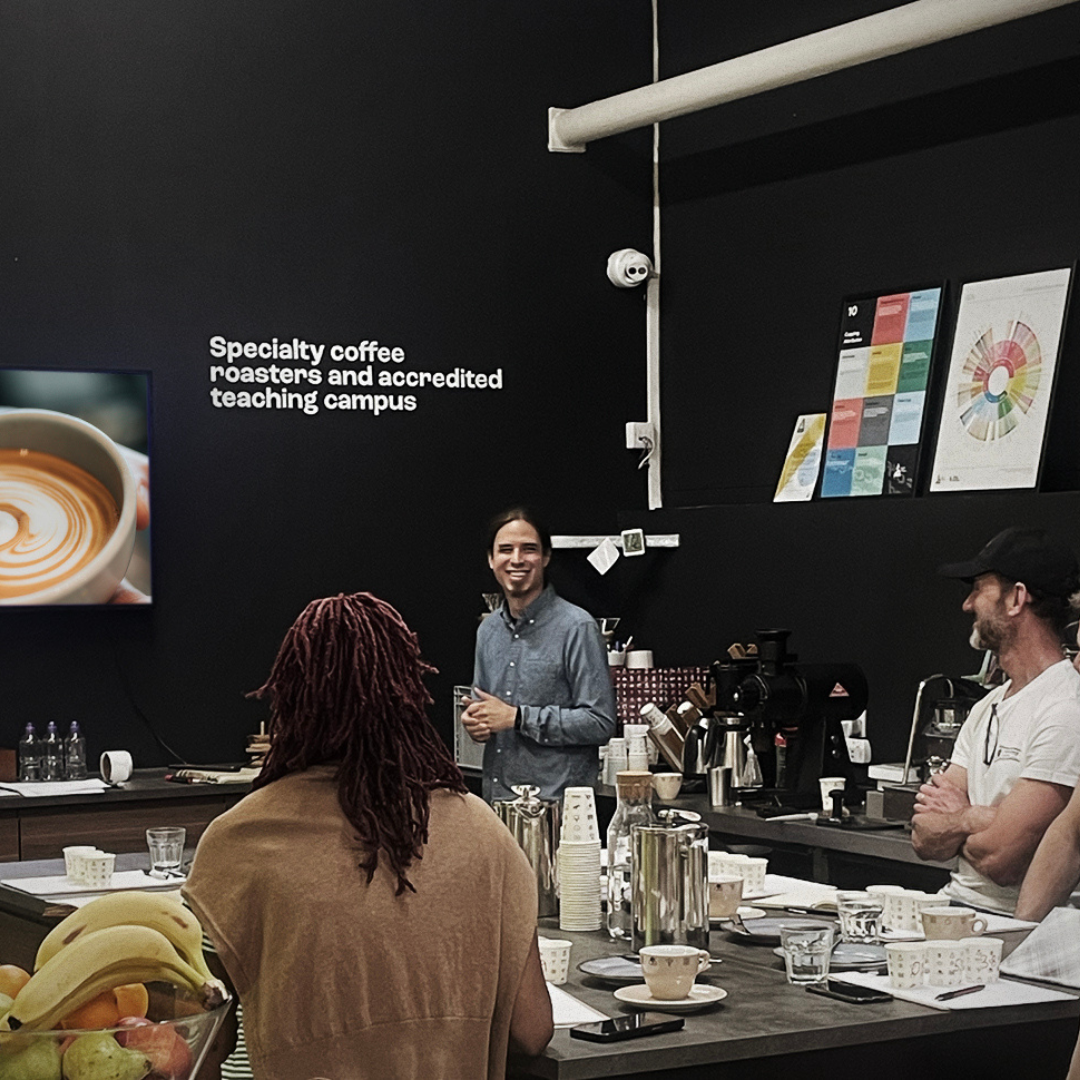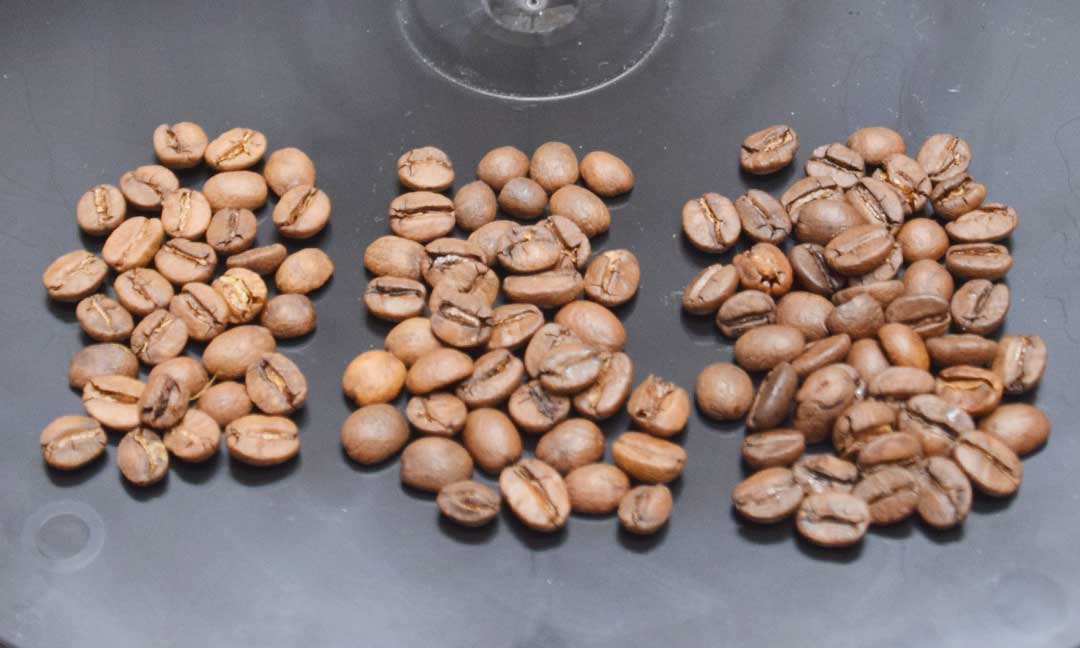
5 things you should know before buying an espresso machine
At some point in every home barista's coffee journey, they will dream of being able to make espresso at home and recreate that coffee shop magic. We often get asked about making espresso at home, so here are five things Ron, our Head of Marketing and Production Roaster, has learnt since investing in his own home espresso setup.
This post is written with the higher end consumer espresso machines in mind that are not automated, meaning you have control over time, grind size, dosage and yield, and the steam wand or how milk is steamed. More automated coffee makers and pod machines are a fine option if that is what you are looking for, and there is an argument to be made that overall they are less wasteful. But if you want to improve your coffee skills by getting your hands dirty, then you’ve come to the right place.
Let me start with the negatives, but hang in there, we will come back to the positives in the end – promise.
It takes Time
It is one thing to place an order at a coffee shop, where the coffee is dialed-in and the espresso machine is revving to go. Not counting with the potential queue of coffee orders in front or yours, the actual time it takes to make your individual coffee is less than a minute. On a home setup, the entire process is a lot less efficient, including cleaning when the coffee grounds go everywhere (and trust me, this will happen). On a home machine unless you the budget for a dual boiler, you will likely have to wait a minute or two after your espresso shot for the machine's boiler to build up enough steam to steam your milk. With a single boiler, it can be tricky steaming several pitchers of milk in a row.
Coffee is a messy business
Coffee is messy - there’s no way around it. Cleaning, tidying and washing up is a big part of barista life. There will be spilt ground coffee, drip trays overflowing with water, spilt milk, jugs and cups to wash up. And that’s just the mess created during the making of one coffee. My advice to any barista: clean as you go.
At a coffee shop, the espresso machine is descaled at the end of every shift (or at least it should be). If it’s not, then you are not only shortening the life span of your machine, it will impact the flavour of the coffee negatively. At home, you can probably get away with descaling and a deep clean once a week, but if you skip a week you will start noticing a bitter after taste. It will depend on the machine, but descaling and a thorough clean means 15 – 30 mins of your time, descaler product, boiling water, and perhaps even a screw driver.

Getting Dialled in
Dialling in coffee is the process of adjusting the grind size or setting on the grinder, so that the espresso shot comes out just right – not too fast and sour, not too slow and bitter. This takes time, and more than a couple of shots will be wasted every time an adjustment is made. Over time, you will know your machine setup well enough to get keep adjustments to a minimum, but there will always be waste, especially when a new coffee is introduced to the hopper and the grind size may be a long way off.
Latte art is not just for instagram
In order to pour good latte art the milk texture has to be silky and shiny like wet white paint. It’s not just for aesthetic reasons, milk that is textured correclty will create microfoam when air is added and mixed in during the milk steaming with the steam wand, means that your milk (if you don’t overheat it) will be at its peak sweetness and will work amazingly with your espresso shot to create a wonderful chocolatey and caramel flat white or latte. Well executed latte art is a sign that the barista who made it has spent many, many hours honing in on their craft.
If you favour milk with your coffee, be sure to use a coffee that’s well suited for stand alone espressos for milk drinks like our house espresso Mina Blend, as a fruity single origin even one that is roasted for espresso won’t always work well when combined with milk and is probably best enjoyed on it's own.

It is an investment
Even an entry level espresso machine will set you back a couple, or a few, hundred pounds. And the espresso machine is only half the equation, almost just as important as the espresso machine is the coffee grinder – be sure to choose one that can grind fine enough for espresso. If you are really adept at repairing things, then a second hand espresso machine could be the way to go, just be wary of machines from hard water areas. Do yourself a favour and invest in a water filter jug, it will slow down the build of limescale in your machine considerably, and the coffee will have more clarity as well.
In addition to the above you will need to invest in scales, and upgrades like a tamper, better steam wand, portafilter basket, milk jugs, tamping mat, knock box, cleaning products... it is an investment in time and money.
Ignore all of the above
When it comes down to it, with the exception of the cost, all of the other points mentioned are great ways to learn more about coffee. With the right beans, speciality coffee made at home can be truly enjoyable and as delicious as most coffee shops out there. Having your own coffee setup at home is a fun experience, and coffee should be fun. An espresso setup at home that is not fully automated, will give you the tools to learn the basics of espresso making.
If you are just getting started with espresso making at home or latte art, then you should definitely consider a fun masterclass with our star barista trainer at our London training campus and roastery.
We’ve tried to provide all the detail you could ever need on the Masterclass and SCA course pages, however If you have any questions, just send us email or DM us on instagram




Leave a comment
This site is protected by reCAPTCHA and the Google Privacy Policy and Terms of Service apply.